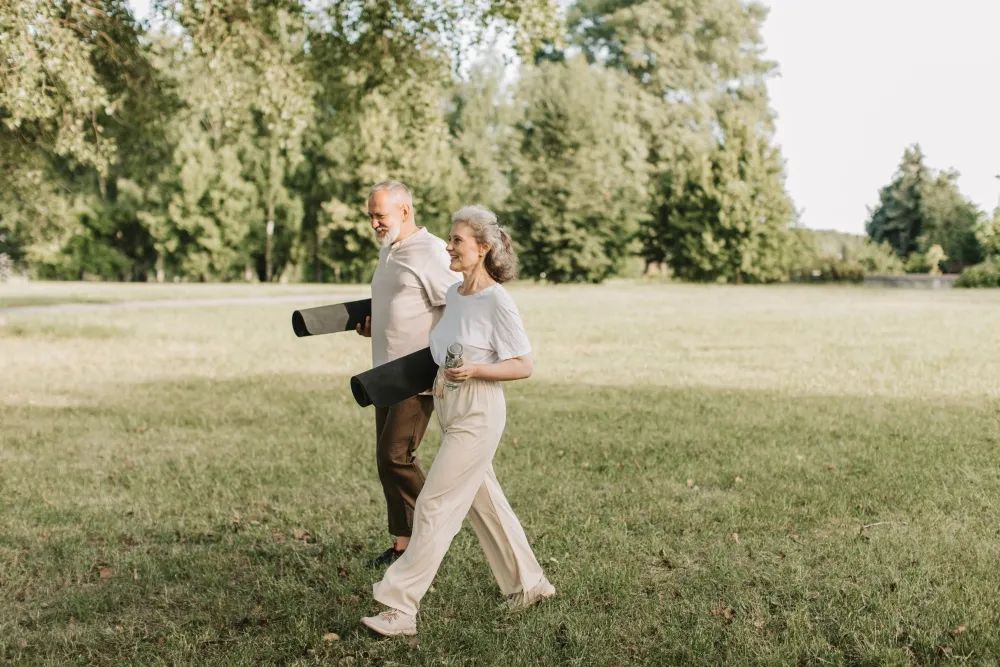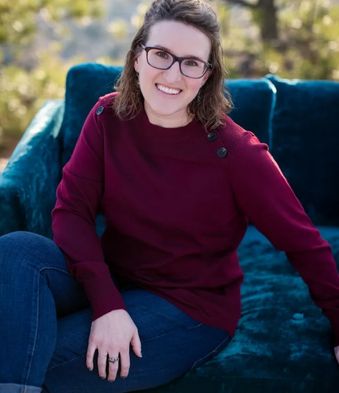
We’re All Aging, How to Do it Well
September 2023
by rebecca stewart
Comedian George Burns once said, "You can’t help getting older, but you don’t have to get old.” Now read that again, only this time imagine Frank Sinatra is crooning Young at Heart in the background, and the stage is set for our conversation today. Yes, we’re talking about aging, specifically how one might aim to do it well. We all know that right around 40, our bodies start making interesting announcements to us. You know, things like:
- Whoa! Slow down, buddy; we’re not just leaping out of bed, okay?
- Well, that was an aggressive sneeze. Listen, our neck needs you to calm down.
- Seriously, how have we not learned: Use. Your. Legs.
- What was I saying?
- Thought you were just gonna hop on up there, did ya? You’re adorable.
- Yeah, I don’t know why our [insert random body part] hurts. This is who we are now.
- You do know what time it is, right? So, you’re just gonna eat that anyway…Okay. Bold choice.
I’m sure your body could add plenty of its own gems to the mix. Sassy though our bodies might be, perhaps the key to aging well is choosing to operate in a mode of acceptance. Accept that with age comes change (it always has) and certain limitations, but that doesn’t mean that all that is good and wonderful is in the rearview mirror. No, there’s a certain glory (at any age) to settling into your own skin and loving your space in this world. And from acceptance comes a desire to adapt accordingly.
We Like to Move it, Move it
Across the board, experts seem to agree that staying active plays a huge role in aging well – in every capacity. Not only is staying physically active good for the body and overall health, but it’s also good for the brain. In an interview with Columbia Magazine, Dr. Linda Fried, dean of Columbia University's Mailman School of Public Health, notes, "Exercise is the closest thing we’ve found to a magic pill for combating the effects of aging.” She elaborates, “It works on every physiological system and keeps your entire body fine-tuned. It even stimulates your brain and helps to prevent cognitive decline.”
“Being active” and what that looks like varies from person to person, but let’s look at some ways to stay active as we age (note: it’s always a good idea to talk over any new/significant changes to your fitness routine with your physician):
No Equipment Required:
- Walking- I know this one seems too obvious, but you can start small with 10-minute walks and gradually build up. Track your efforts to help keep you motivated. Added bonus if you can add a walking buddy or two into this routine. Less-than-desirable weather, become a mall-walker.
Did you know… At Rimrock Mall, you can find the Billings Clinic Wellness Trail, designed for active adults who want to get healthy. Simply follow the signs and “walk your way to a healthier you!” (Doors are open at 6 a.m. seven days a week)
- Yoga- Did you know that the slow, measured movements involved with yoga poses can lead to better balance and movement, which can help prevent falls. Billings Parks & Rec offers both Gentle Yoga and Chair Yoga.
Let’s Get Together
- Fitness classes- Specifically, I’m thinking about looking for SilverSneakers classes near you. We love the camaraderie of a fitness class and with SilverSneakers, a supportive and knowledgeable instructor. You also can't miss with fitness classes offered at the Billings Community & Senior Center.
- Lifetime Sports like Golf/Pickleball/Ping Pong/Tennis/Hiking/Bowling/Dancing/Swimming- Granted, not all of these will get your heartrate going for a good cardio workout, but it’s all active movement that can also involve other people. We love it even more if the other people are the grandkids.
Staying Connected
The social piece of our collective human experience is an important one – even for those of us who are living our best lives nestled in at home. Harvard Health Publishing wrote in 2019 that “A strong social life has been linked with many health benefits, like less risk of depression and longer life span. But a new study suggests that interacting with a wide range of people may offer even greater benefits.” It was found that those who were pushing outside of their typical social bubble were “more likely to have higher levels of physical activity, greater positive moods, and fewer negative feelings.” Essentially, more variety in social interactions = less time spent being sedentary.
Expanding Our Social Circle:
- Volunteer- Community engagement by way of volunteering can connect with a wide variety of ages. Churches, schools, and local organizations can help connect you to such opportunities.
- A senior center near you- Get looped in on the regular happenings at your neighborhood senior center. Classes, activities, lunches, and more!
- Weekly gatherings- Like you once attended Mommy & Me, be on the lookout (or start your own) book club, coffee club, Bible Study, or Bunco Buddies. With coffee shops galore, gathering some gals or guys is easier than ever (and have them bring a friend!).
- BINGO- Keep an eye and ear out for BINGO nights happening in your community. Bring a friend or make one upon arrival.
- Take a class- Not only might you meet new people, but in terms of “use it or lose it,” learning something new (with an instructor) can really help with “brain” health.
Speaking of learning new things…As we’re all too aware, staying connected can also come via technological assistance, yet the more senior of our population might be reluctant to embrace such rapidly changing technology. That’s fair, but you’re missing out if you’re keeping yourself in a technological desert. As for the younger people who might be tasked with helping our elders, patience, my friends. Remember, this was all new to you once, too. Avoid the temptation to take and do; instead, show and explain and invite them to get their hands (and brains) on with the task at hand. Look for classes available in the community. (Don’t forget to get educated about common scams to be on the lookout for).
I hear you.
But do you, really? Yes, it’s time we talk about assistive technology that one might view as a clear sign that you’re “getting old.” Hearing aids. There is no shame in not being able to hear well, so let’s talk to our healthcare professionals about the options available to us so that we can always be a part of the conversation and experience the world around us.
Brain Healthy Habits
Honestly, this is the thread that runs through all the pieces, everything from the food we eat and the sleep we get to the challenges we accept (physically and socially); it’s all working to do our brain good. Push for the learning of new skills or making old skills more challenging (think all those word puzzles or crosswords you do, there are options out there to challenge you or a more challenging pattern in your knitting).
Let’s be real; aging is not the easiest thing. Honestly, it can be hard to accept when once simple things no longer are or when our brain doesn’t seem quite so spry. Challenges will arise, but will we be active or passive participants in how we’re aging? We’re all getting older, but do we have to get old?
Originally printed in the September 2023 issue of Simply Local Magazine
Never miss an issue, check out SLM's digital editions here!





